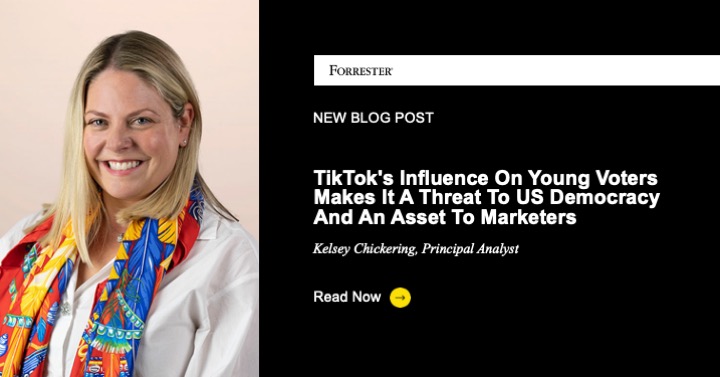New legislation just passed in the US House of Representatives signals that TikTok regulation is coming. The core argument made by US lawmakers centers around US user data making its way into the hands of the Chinese government. There’s another issue at hand, however: TikTok’s influence over young US voters. According to Forrester’s Consumer Benchmark Survey, 2023, more than half of US online adults under 25 years old use TikTok at least weekly. TikTok constantly shows its power to influence the masses — from cultural movements to purchasing decisions. In response to this potential ban, TikTok targeted young users with a message to call their local representatives in protest. Congress started getting thousands of calls from teenagers asking them not to ban the social media platform. One thing is clear: TikTok has significant sway over young, voting-age citizens in the United States.
A Fine Line Separates Algorithmic “Sway” From Manipulation
TikTok’s influence on young people in the United States is unquestionable, but does it manipulate US voters? TikTok is the only major social media platform based outside of the US, opening its parent company (ByteDance) to speculation about government intervention. Although ByteDance denies this allegation, it’s possible that the Chinese government is using — or could use — TikTok’s algorithms to tip the scales of content in their favor. Social media platforms are already playgrounds for disinformation, and many fear that TikTok’s roots in China compound that issue.
TikTok’s Influence — Good Or Bad — Makes It An Optimal Media Channel
Marketing exists to influence people, and marketers choose media channels based on how efficiently they can garner that influence. This controversy further proves that TikTok is a media plan all-star because:
- TikTok creators drive product interest. Many products — from leggings to cheese — go viral on TikTok and subsequently sell out in stores. When Tabasco launched its limited-edition salad dressing in collaboration with a TikTok influencer, Tinx, it became Amazon’s best seller in the hot sauce category.
- Audience reach ranges from mass to niche. Most of Gen Z, ages 12–17 (67%), can be found on TikTok; this age group represents one of the hardest-to-reach audiences on traditional media channels such as television. TikTok also hosts countless communities, from beauty to engineering. There’s a TikTok community for every type of topic, making it a great place for brands to develop partnerships within many different audience segments.
But with TikTok’s future in the US in question, marketing executives should be planning for contingencies, now.
Forrester clients can schedule a guidance session to chat more.







